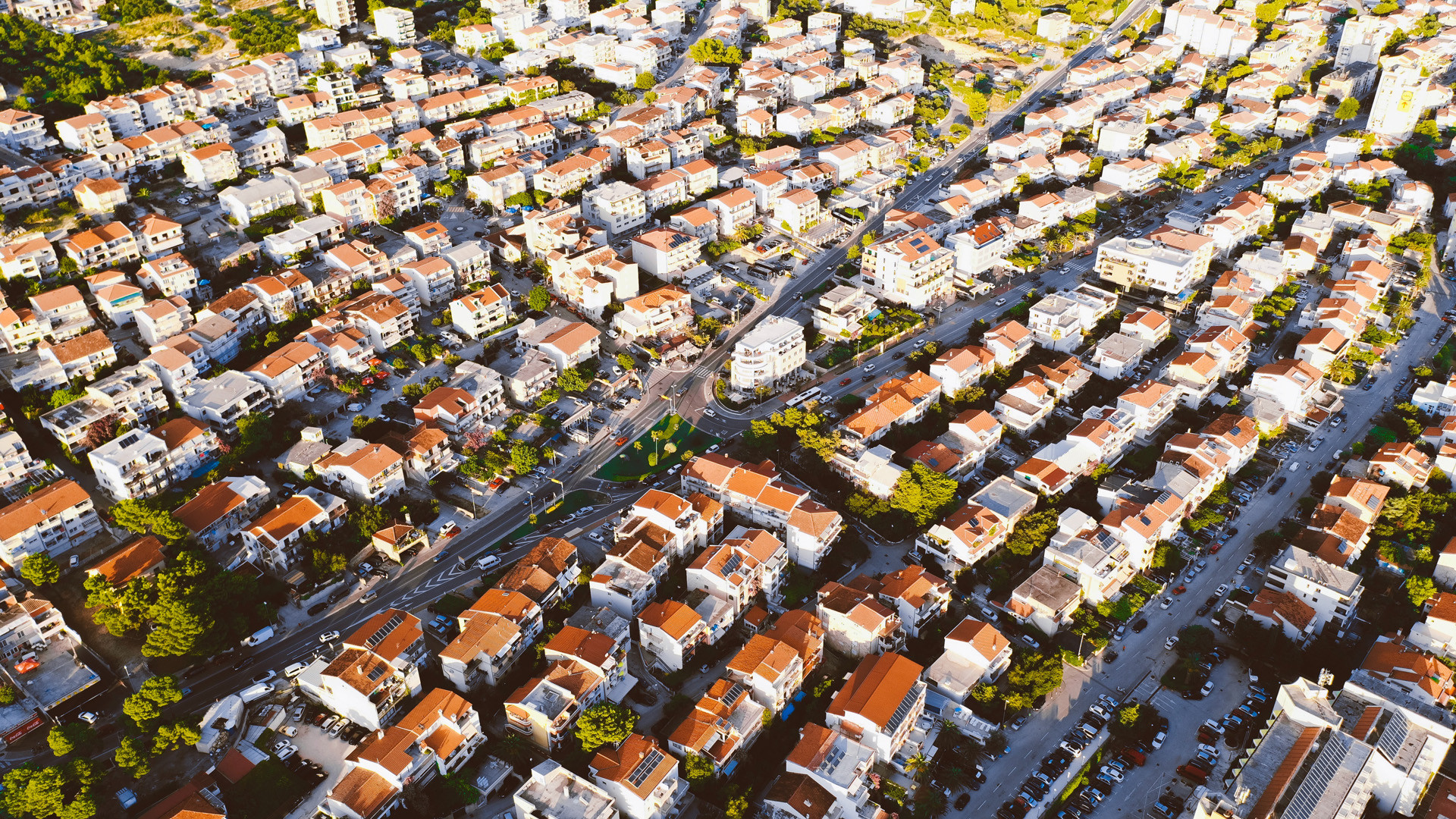This article was originally published by Mayors of Europe and is republished here with permission. Written by Sila Egridere, Architect and Smart City Expert.
Last year, when I analyzed the IMD Smart City Index 2024, I focused on the top three and bottom three European cities in the ranking. This year’s 2025 edition shows remarkable consistency – Europe’s leaders remain strong at the top, and the cities at the bottom continue to struggle. That’s why this time, I decided to shift my focus. I looked into the cities that made the biggest leaps in the rankings.
Several European cities have made significant upward leaps in just one year—some climbing over ten spots in the global ranking. These shifts are more than statistical quirks; they signal real progress, often driven by strategic decisions and grassroots innovation. They tell the story of cities that are listening, adapting, and accelerating transformation in response to their citizens’ evolving needs.
Which European cities climbed the most in just one year—and more importantly, what did they do to get there? Let’s find out.

Warsaw (↑10 → 28th): Prioritizing What Citizens Need
Warsaw has jumped 10 places to rank 28th in the IMD Smart City Index 2025—a steady and strategic rise. Rather than chasing flashy innovations, the Polish capital has focused on improving everyday services that directly impact residents’ quality of life. The city has made clear progress in digital governance and mobility. Around 76% of citizens feel comfortable using digital payment systems, and satisfaction with public transport and online access to services is growing. Warsaw also scores well in areas like remote work opportunities and support for new businesses, showing its commitment to creating an accessible and future ready city.

What’s most telling is how well the city aligns with its citizens’ priorities. Issues like affordable housing, health services, and public transportation top the local agenda—and Warsaw is actively addressing them with targeted smart solutions.
This progress is grounded in broader national momentum. Despite global disruptions, Poland recorded the highest GDP growth in the EU in early 2023 (3.8%, Eurostat), and remains one of Europe’s most resilient economies. With tech giants like Microsoft and Netflix launching major hubs in Warsaw, and the city planning to more than double its metro network by 2050, the capital is clearly investing in long-term urban livability. Projects like Towarowa 22 and the revitalization of the Palace of Culture and Science area reflect Warsaw’s push for greener, people-centered urban design.
In short, Warsaw’s rise in the rankings isn’t just digital—it’s structural, social, and strategic.
Vilnius (↑13 → 34th): Digital by Design
Vilnius made one of the most impressive leaps in this year’s IMD Smart City Index, rising 13 places to land at 34th. The Lithuanian capital is a standout for its digital-first governance, strong citizen engagement, and bold sustainability agenda.

In 2025, Vilnius was named the European Green Capital, a recognition of its achievements in clean mobility, energy efficiency, and inclusive environmental planning. Over 94% of residents now live within 300 meters of a green space, thanks to initiatives like the Green Wave, which added more than 68,000 trees and shrubs to the urban landscape.
Digital access remains one of Vilnius’s key strengths. Satisfaction with online services for remote work, business setup, and city administration is high, with more than 78% of residents feeling comfortable making online payments—evidence of trust in the city’s digital infrastructure.
Importantly, Vilnius integrates green policy with digital innovation: from launching a Sustainable Urban Mobility Plan to investing in hydrogen-powered public transport and participatory budgeting tools. Its goal to reach climate neutrality by 2030 and full fossil fuel elimination by 2050 under the NetZeroCities initiative, underlining a city not just improving – but leading.
Riga (↑13 → 46th): Building Trust in Digital Transitions
Riga has moved up 13 places this year, reaching 46th in the IMD Smart City Index 2025. The Latvian capital is gradually gaining momentum, especially in areas where digital services meet daily needs.
Riga performs well in online access to public services, digital work tools, and real-time traffic and pollution updates. While just under 55% of citizens feel comfortable sharing personal data online, over 68% appreciate the ease of digital transactions—indicating a shift toward growing trust in technology.

Top citizen concerns include affordable housing, corruption, and employment—and Riga appears to be responding with targeted improvements in transparency and support for local businesses.
Though not yet a digital frontrunner, Riga’s steady climb signals a city that’s learning, adapting, and beginning to earn its residents’ digital confidence.
Bucharest (↑22 → 78th): A Bold Leap Toward Smart Urbanis
Bucharest made the largest jump among all European cities in the IMD Smart City Index 2025 – rising 22 places to 78th. For a city often viewed as a digital latecomer, this leap signals a new phase of commitment to smarter urban services.
The Romanian capital still has work to do, but improvements are visible. Digital access to public documents, business services, and e-government platforms are gaining traction. Nearly 73% of citizens feel more comfortable using digital technologies – a notable increase from previous years.

Top local priorities such as air pollution, corruption, and transparency are being addressed through better environmental monitoring and open governance tools. It’s an early stage, but Bucharest’s momentum shows what’s possible when investment meets political will.
Zagreb (↑17 → 85th): Catching Up Through Connectivity
Zagreb rose an impressive 17 spots in the 2025 Index, landing at 85th. While it still ranks lower compared to many European peers, this shift signals a city starting to bridge the digital gap.
Citizens in Zagreb highlight affordable housing, corruption, and access to healthcare as top concerns – areas reflected in the city’s recent efforts. Improvements in digital access to government documents, online job resources, and business services have helped build momentum. Notably, 58% of citizens feel comfortable with new digital technologies, and public trust in online interactions is gradually increasing.
With stronger infrastructure and citizen-focused digital tools, Zagreb is slowly but steadily transforming into a more connected and responsive city.

What These Climbs Tell Us
These five cities may not yet dominate Europe’s smart city rankings—but their upward momentum tells a compelling story of strategic investment, political coherence, and citizen-centric innovation. From Warsaw’s pragmatic urban upgrades to Bucharest’s bold digital leap, one thing becomes increasingly clear: being a smart city is less about technological supremacy, and more about responsiveness, adaptability, and alignment with public needs.
Moreover, these trajectories reveal a shift in the geography of urban innovation. Smart city progress is no longer confined to Europe’s largest metropolises or established tech hubs. Midsized capitals like Vilnius and Riga are proving that agility, clear vision, and sustained public engagement can redefine the urban future—from the ground up. As the next edition of the Index approaches, these rising cities warrant close attention—not just for their rankings, but for the models they represent.
References:
IMD Business School (2025). IMD Smart City Index 2025 Report. [online] Available at: https://www.imd.org/smart-city-observatory/home/ [Accessed 24 Apr. 2025] Photo credit IMD Smart City Index2025.
City of Warsaw (2024). Warsaw at the Forefront of European Cities of the Future. [online] Available at: https://en.um.warszawa.pl/-/warsaw-at-the-forefront-of-european-cities-of-the-future [Accessed 24 Apr. 2025].
Eurostat (2023). Quarterly GDP Growth – First Quarter 2023. [online] Available at: https://ec.europa.eu/eurostat/ [Accessed 24 Apr. 2025].
Invest Lithuania (2025). Vilnius Named European Green Capital 2025. [online] Available at: https://investlithuania.com/news/lithuania-europes-emerging-green-data-center-investment-opportunity/ [Accessed 24 Apr. 2025].
City of Vilnius (2025). Green Initiatives and Urban Sustainability Projects. [online] Available at: https://vilnius.lt/en/ [Accessed 24 Apr. 2025].
City of Riga (2025). Riga Rises 24 Places in International Smart City Index. [online] Available at: https://www.riga.lv/en/article/riga-has-risen-24-places-international-smart-city-index [Accessed 24 Apr. 2025].
City of Zagreb (2025). Smart City HUB Zagreb. [online] Available at: https://smart.zagreb.hr/pages/multimedija [Accessed 24 Apr. 2025].
Romania Insider (2025). Bucharest Tops Smart City Project Rankings. [online] Available at: https://www.romania-insider.com/bucharest-tops-ranking-smart-city-projects-report [Accessed 24 Apr.2025].
European Commission (2023). NetZeroCities: Delivering the Climate-neutral and Smart Cities Mission. Brussels: European Union.
Nam, T. and Pardo, T.A. (2011). Conceptualizing Smart City with Dimensions of Technology, People, and Institutions. In: Proceedings of the 12th Annual International Digital Government Research Conference. ACM, pp.282–291.






















































